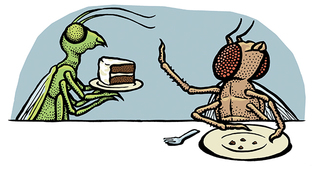 loading
loading
FindingsHow to put a fruit fly on a dietScientists find clues from insects about appetite control.  Gregory NemecView full imageYale researchers have discovered that fruit flies—not known for their self-control around food—have an on-off switch for sugar. It takes just one gene and two neurons. Silence or shut down the neurons and the fly guzzles excessive amounts of sucrose solution. Rev them up, and the fly loses interest in the sweet stuff. The discovery may help us understand how both insects and people control their appetites. Most neurons that prompt an insect to stop feeding are equipped to sense a bitter taste; they warn of the presence of harmful toxins. That this gene and these neurons discourage consumption of a nutritious substance like sugar took the research team aback, says corresponding author John Carlson, a professor of molecular, cellular, and developmental biology. “It’s been known for about 50 years that sugar will activate feeding response. That makes sense,” Carlson points out. “So this is surprising.” The gene, called IR60b, enables fruit fly cells to build a complex chemical receptor. That receptor is lodged in the cell membranes of a pair of neurons in the fly’s throat, and the researchers found that it is equipped to sense sucrose specifically. It’s an “element in the circuit logic of feeding” that was previously unknown, says Carlson; it probably exists to stop the fly from overeating. The study—whose lead author is Ryan Joseph, a postdoc in molecular, cellular, and developmental biology—appeared in the online journal eLife. The finding could have multiple applications, because clues to insect feeding processes might help control insects that harm crops or transmit germs to humans. Plus, there’s the question many people are probably asking themselves: could this make me thinner? Carlson notes that fruit flies share about 75 percent of the genes known to cause disease in humans; they can develop their own versions of obesity and diabetes. “It would be interesting,” he says, “to see whether the mechanism that we found has a human counterpart.”
The comment period has expired.
|
|